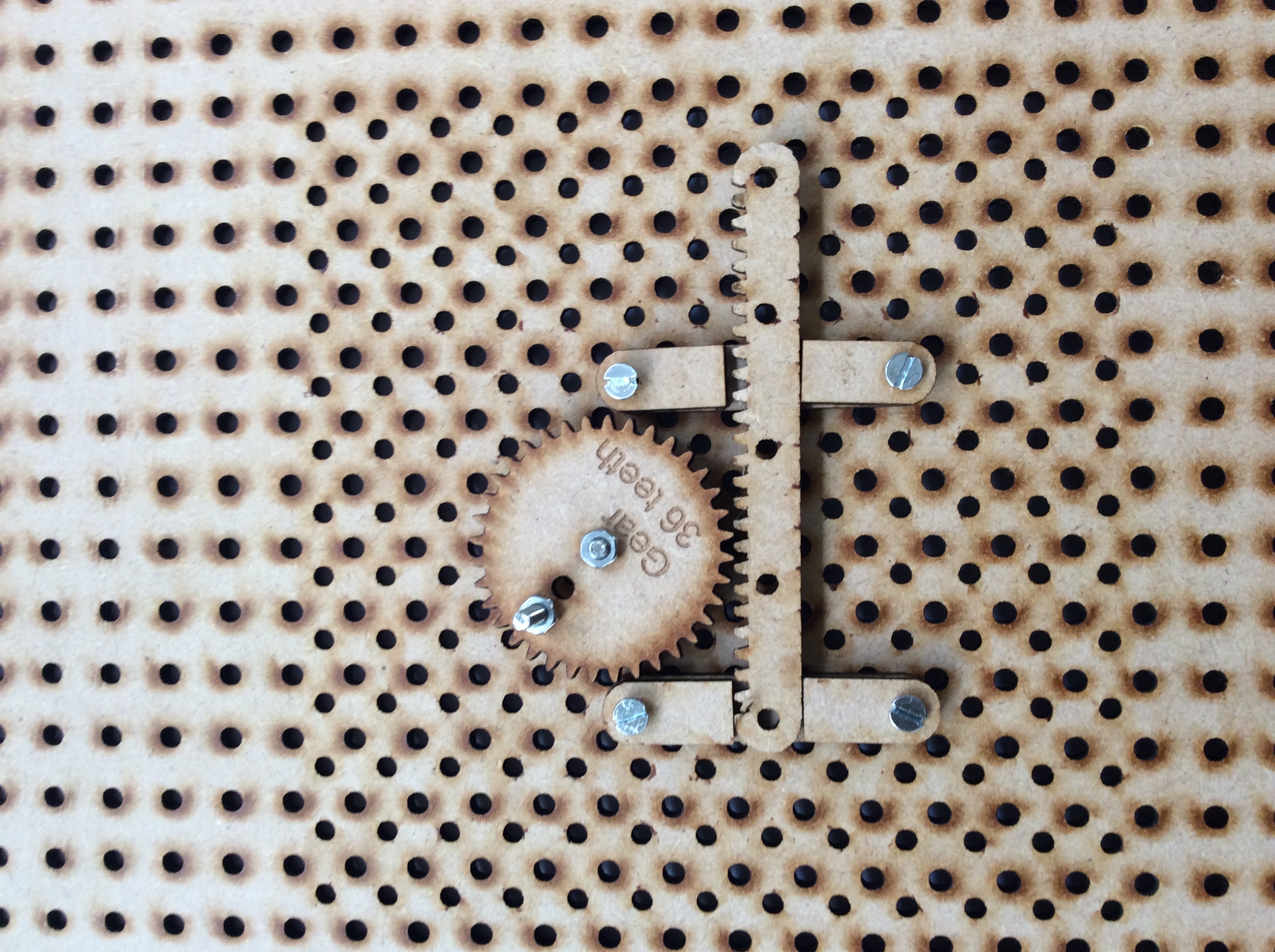| Week 1 | Week 2 | Week 3 | Week 4 | Week 5 | Week 6 | Homework Tasks |
An Introduction to Mechanisms
1 Linkages
Learn It
- Linkages are mechanisms which allow engineers to alter force and/or motion to perform useful functions.
- We can use linkages to change:
- The direction of motion
- The type of motion
- The size of a force
- A linkage is made up of connected rods and pivots.
- The motion and/or force that is input at one end of a mechanical linkages is different from the output.
Learn It - Reverse-motion linkage
- A reverse-motion linkage changes the direction of motion.
- The reverse-motion linkage in the video below, alters the direction of motion. Pushing as input, becomes pulling as output, and vice versa
Badge It - Silver
- Replicate the reverse-motion linkage shown above using Wacano
- Adjust the pivot, so that a small input displacement becomes a large output displacement.
- Adjust the pivot, so that a small input force becomes a large output force. Take a photo of this one and upload your work.
Learn It - Parallel-motion linkage
- A parallel-motion linkage creates an identical parallel motion with regard to direction.
- The setup above shows a parallel linkage that transfers identical motion.
- By adjusting the pivot points, we can alter sizes of motion and/or forces.
Badge It - Gold
- Set up a parallel linkage using Wacono, to give provide the largest possible force on the rubber band.
- If an input force of 5N moving a distance of 10cm was used, what would be the output force if the output distance was 2cm?
- Take a photo of your linkage and upload this with your explanation.
Learn It - Bell-crank linkage
- A bell-crank linkage changes the direction of movement through 90°.
- A bell-crank linkage looks a like an "L".
- By pulling (or pushing) the linkage in one direction, it creates a similar motion at the other end of the linkage at 90°.
Learn It - Treadle linkage
- A treadle linkage shows how linkages can be used to change one type of motion into another.
- In this case, the rotary motion of the cam moves a parallel-motion linkage.
- The parallel-motion linkage controls the identical side-to-side, or oscillating motion.
Badge It - Platinum
- Create a Bell-crank linkage and a Treadle linkage.
- Research and report on two uses for each of these types of linkage.
- Your report should include images of your linkages on one document, and explanation of how they work, and examples of their use, including diagram.
Extension - Here are some more linkages you could build
1 - Peg, slot and slider

2 - Rack and Pinion

3 - Crank, link and slider
